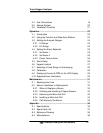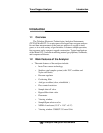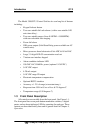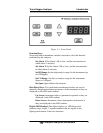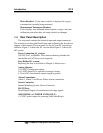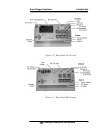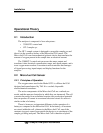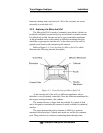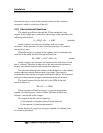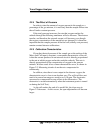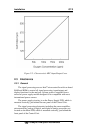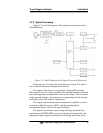
Installation OT-3
Teledyne Analytical Instruments 6
Operational Theory
2.1 Introduction
The analyzer is composed of two subsystems:
• 3300/OT-3 control unit
• OT-3 sample sys.
The OT-3 sample system is designed to accept the sample gas and
direct it to the sensitive surface of the Micro-fuel Cell sensor. The
Micro-fuel Cell is an electrochemical galvanic device that translates the
amount of oxygen present in the sample into an electrical current.
The 3300/OT-3 control unit processes the sensor output and
translates it into electrical concentration, range, and alarm outputs, and a
trace oxygen meter readout. It contains a microcontroller that manages
all signal processing, input/output, and display functions for the
analyzer.
2.2 Micro-fuel Cell Sensor
2.2.1 Principles of Operation
The oxygen sensor used in the Model OT-3 is a Micro-fuel Cell
designed and manufactured by TAI. It is a sealed, disposable
electrochemical transducer.
The active components of the Micro-fuel Cell are a cathode, an
anode, and the aqueous electrolyte in which they are immersed. The cell
converts the energy from a chemical reaction into an electrical potential
that can produce a current in an external electrical circuit. Its action is
similar to that of a battery.
There is, however, an important difference in the operation of a
battery as compared to the Micro-fuel Cell: In the battery, all reactants
are stored within the cell, whereas in the Micro-fuel Cell, one of the
reactants (oxygen) comes from outside the device as a constituent of the
sample gas being analyzed. The Micro-fuel Cell is therefore a hybrid




